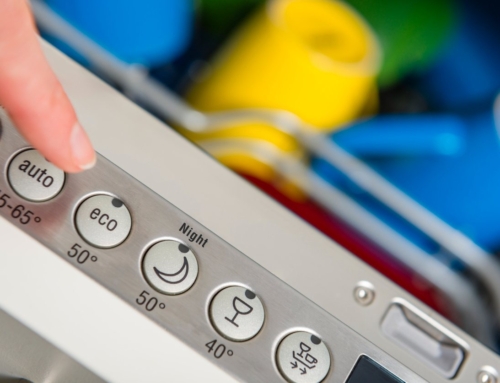Are you looking for plants that improve air quality? We have good news for you: Every plant improves air quality—at least to some extent. Whether that improvement is measurable is a different matter (but we’ll get into that later).
Let’s go over how plants improve air quality, the science behind it, and which plants you should consider bringing into your home to improve your atmosphere.
Do Plants Help Indoor Air Quality?
Yes, indoor plants do improve air quality. But the effects may not be as great as you expect. We’ll need to look at some studies to understand the application of this science into home decor.
How Plants Improve Air Quality
So how do plants improve air quality exactly? The notion is likely based on the common understanding of photosynthesis; plants absorb light, water, and carbon dioxide (a harmful air pollutant to humans) and use that to create food for themselves and oxygen for their environment.
Numerous studies suggest plants can also absorb other air pollutants from their surroundings in the photosynthesis process. One study tested four common houseplants and their ability to remove formaldehyde from the surrounding air. After 24 hours in a closed chamber, the plants managed to extract two-thirds of the formaldehyde.
Another study by NASA found that common houseplants can remove high concentrations of indoor air pollutants, such as cigarette smoke, organic solvents, and even radon.
It all sounds great—and the lab results are impressive—but they don’t provide the whole story when you’re trying to determine the best solution for your home.
Why These Studies Don’t Really Matter for Households
The notion that plants absorb air pollutants is true. However, it’s not possible to replicate the results from the above studies in your home.
Why? Because those plants were tested in small laboratory environments with highly concentrated contaminants. In your home, those air pollutants aren’t nearly as abundant and your plants are surrounded by much more air.
The reality is that your houseplants’ rate of pollutant absorption can’t compete with quality airflow and mechanical air purifiers. National Geographic estimates you would need 10 plants per square foot of your home to experience a measurable decrease in indoor air pollutants. While some people would love to live in an indoor forest, this simply isn’t viable.
The Health Benefits of Indoor Houseplants
You may be reading this article and think, “But I genuinely feel better when I’m surrounded by plants!” This is not a placebo effect. Even though you can’t really notice a difference in air quality, there are several other health benefits to having more houseplants in your home:
- Plants are therapeutic: One study observed the effects of horticultural therapy on psychiatric patients. The patients felt that getting out of the psych ward and working on taking care of plants helped them focus their attention, which helped their general well-being. The same can be applied to home life, allowing you to take a break from work or chores.
- Plants can reduce stress: Active interactions with plants, like repotting or watering, can reduce physiological and psychological stress. Just a little interaction can go a long way to help you feel more soothed during the day.
- Plants help you focus: Another study found that plants can help you focus on the task in front of you. This study even compared the effect between fake plants and real plants, and real plants seemed to be the only ones that had a positive effect on concentration.
In summary, plants improve the general atmosphere of your home and help you live a happier and more productive life. Now let’s get into which plants you should bring inside.
Which Plants Improve Air Quality the Most?
While every plant absorbs some level of carbon dioxide and air pollutants, some plants are better at it than others. The rule of thumb is that a plant will absorb more carbon dioxide if it lives long, is large, and has a complicated root system. The best indoor plant to purify the air would be large trees, but you usually can’t bring an entire tree into your house (unless it’s Christmas).
Here are eight of the top indoor plants for air quality that can turn your home into a proper green space.
1. English Ivy
English ivy is a low-maintenance plant that grows fairly quickly. While it does create small, greenish flowers, most of the growth is in its characteristic green leaves and long root system. Add wooden stakes in your pot for the ivy to climb, or just let the leaves cascade over its pot and toward the ground.
2. Snake Plant
While other plants produce oxygen during the day and carbon dioxide at night, snake plants continue to produce oxygen at night. Putting one of these in your bedroom could potentially help you breathe easier while you sleep.
3. Spider Plant
Spider plants are one of the most popular houseplants because of how resilient they are. While their ideal climate is a tropical environment with warm temperatures and humid air, they can endure cold spells and dry climates like a champ. You can even use the flowers they produce to create new spider plant sprouts so you can fill your home with this leafy plant.
4. Aloe Vera
While many people know aloe vera for its gel’s healing properties, the succulent is also a great decoration for tables, windowsills, and bathrooms alike. There are hundreds of different types of aloe vera, ranging from long spiny leaves to short, thick leaves that resemble tightly-bound flower petals.
5. Fiddle-Leaf Fig
Fiddle-leaf figs are indoor trees that feature large, veiny leaves. Their size allows them to either be a dramatic accent to a room or an attention-grabbing focal point. But make sure you have plenty of vertical space for it to grow—these plants can grow up to 10 feet tall.
6. Peace Lily
An incredibly leafy plant that produces one white flower twice a year, the peace lily makes a wonderful centerpiece on top of tables or desks. But given the right conditions (plenty of sunlight and humidity) a single peace lily can fill an entire corner of your home.
7. Chinese Evergreen
This plant has stunning two-tone leaves and white flowers that bloom every spring and summer. Chinese evergreens also have a range of color varieties, from two-tone green to red, which can add a bit more personality to your home.
8. Vegetable Garden
We know most vegetable gardens are planted in a backyard, but some homes simply don’t have the real estate to allow that. You can still make an herb garden or small vegetable garden on a windowsill or in a corner of your home with planter boxes. Follow our tips on how to start a vegetable garden at home.
How to Care for Your Plants
Even plants that improve air quality can turn on you if you don’t treat them well.
When plants die and decompose, they release a significant amount of carbon dioxide back into their environment. So if you don’t want your plants to cause more air pollution, you need to take proper care of them.
Here are three things every plant needs:
- Light: Plants need light to photosynthesize. But getting too much light can leave burn marks on the leaves and do more harm than good. If you can, put your plants by the window during the morning, but move them away from the harsh sun of the afternoon. You can also invest in UV grow lights to give your plants constant nourishment.
- Water: If plants don’t get enough water, they die. But if they get too much water, they can get root rot and still die. Every plant has different watering schedules so make sure you’re following those to keep it alive. But as a good rule of thumb, your plant won’t need water as long as the top inch of soil is still damp.
- Soil: Plants extract the nutrients from their soil, which means you need to fertilize the soil regularly. While you can buy fertilizer from the store, it’s more sustainable and resourceful to make your own mulch from food scraps and garden clippings.
Improve Your Atmosphere with Indoor Plants
This guide should help you understand the effect indoor plants can have on your home. While some plants may actually offer air purifying benefits, we can really only rely on our houseplants to give us better peace of mind and to help us feel more connected with the nature around us.
If you’re looking for more ways to live a green life, consider looking for green energy solutions to power your home. Contact Spring Power and Gas today to find out how you can access sustainable energy.




![Top 11 Sustainable Building Practices for Eco-Homes [Plus 5 Sustainable Materials]](https://springpowerandgas.us/wp-content/uploads/2023/02/iStock-181062267-500x383.jpg)

